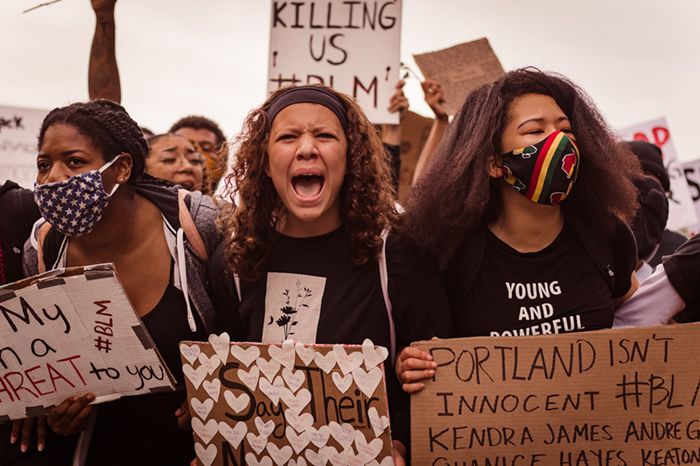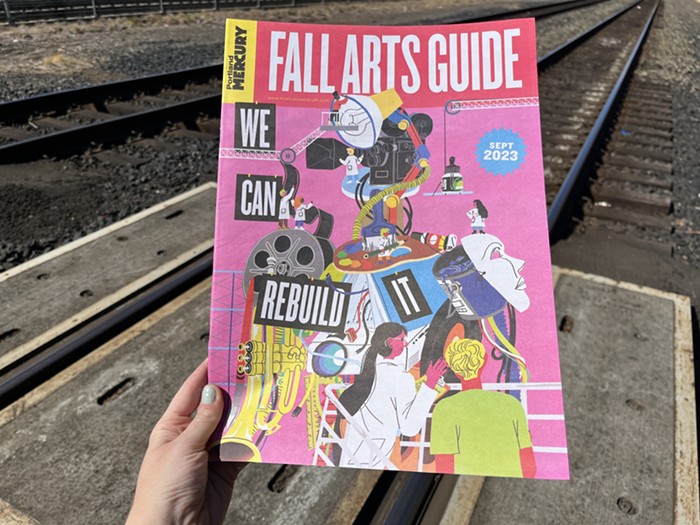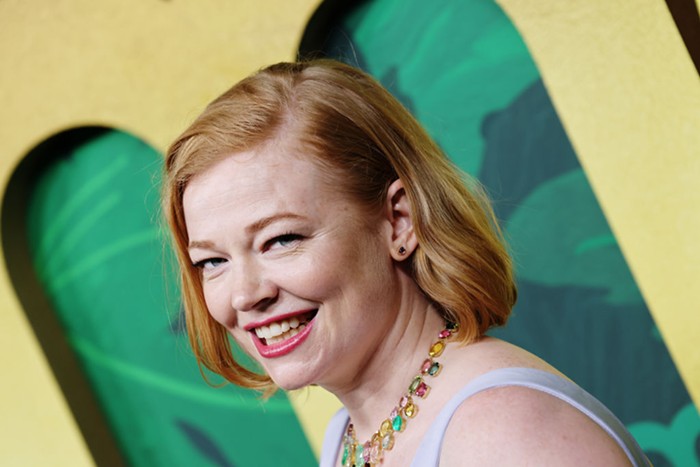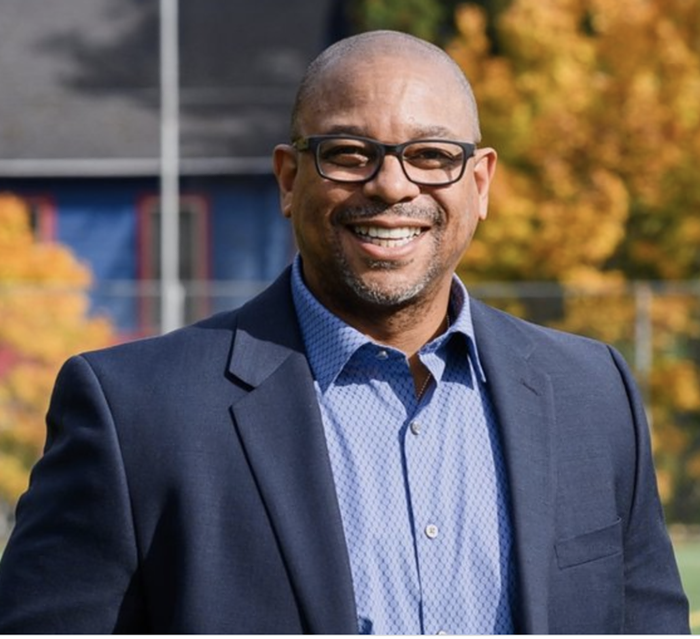PORTLAND'S FALL THEATER SEASON kicks off with three major plays that largely feature African Americans. A new Asian American and Pacific Islander theater group formed in the spring and has been performing play readings to sold-out audiences at Portland Center Stage. And theater patrons have supported the Miracle Theatre Group, a center for Latino theater and other arts, since 1985.
All this, and in the whitest major city in the US.
Theater is the onstage representation of human experience. It's also about how that experience is represented. The subject of racial diversity onstage can be particularly pointed given Portland's racist history, current gentrification, and a future that's statistically going to be less predominantly white. A movement to create theater that reflects the changing demographics of Portland has been picking up steam for years now, and by some measure appears to be working. So is Portland theater in good shape? Does it have a ways to go? Where are culturally specific theater groups in the mix?
Not surprisingly, it's complicated.
You might not remember this story, but the arts groups in town sure do: A couple of years ago, the Regional Arts and Culture Council (RACC), which distributes public money for the arts in Portland, announced a push to track racial diversity in the local arts scene.
When the city and RACC announced the initiative in 2012, some arts organizations came away with the idea that they would lose funding if their numbers didn't reflect the demographics of Portland's metro area—"the 70/30 thing," as several people in the theater community said during interviews for this story, reflecting Portland's white-to-non-white demographics.
That's not accurate, says Jeff Hawthorne, RACC's director of community affairs. Instead, RACC wants to use the numbers it collects to understand where arts organizations are and how they might better reflect the city.
Hawthorne says RACC wants to answer questions like: "Where are the gaps? Are there zip codes that aren't being served? Are there ethnically specific communities that aren't being served?"
One reason RACC is interested in this discussion (and one reason it's been hosting quarterly meetings with arts organizations about being "a community of learners") is so that arts organizations can better serve the Portland of the future—say, in 2050.
"The indicator for the future is our public schools," Hawthorne says. "They are just now tipping into not being primarily white organizations."
For RACC, he says, the message to the arts organizations isn't about quotas or tallies. "We've talked about the changing demographics," Hawthorne says. "This is what our city will look like in the future. Let's ramp up to meet them."
Industry insiders argue that theaters should also be thinking about diversity in order to keep—and grow—their audiences.
"The marketplace has transformed," says Miracle Theatre's Olga Sanchez. "How people access their entertainment and what people do with their free time has changed."
In other words, people who don't see the complex realities of diverse lives reflected on Portland stages—due to monochrome casts, a paucity of female playwrights, or unambitious subject matter—now have options. Instead of heading out to watch local theater, they can stay home and watch the resolutely diverse Fast and Furious movies, or stream Scandal, a show created by and starring women of color.
But the true stakes are even higher than reaching an audience beyond the typical Portland theatergoer (who is a retired white woman, basically, according to Artists Repertory Theatre's Nicole Lane). Without a diverse audience, says Sanchez, theater loses its meaning.
"Theater is about dialogue," she says. "It's ultimately a form that is civic, social, and political. It's about the exchange of ideas when we're all in the room."
Brian Weaver, Portland Playhouse founder and artistic director, says that his goal is to have what he calls a "complex" audience for Playhouse shows. Weaver says that bringing in an audience made up of people from a variety of different economic, racial, and ethnic backgrounds is not just good business, "it's the exciting thing to do."
That's one reason the Playhouse is committed to producing the full round of August Wilson's Century Cycle, including The Piano Lesson, which kicks off its 2014/2015 season. But that excitement is also why Weaver programmed Sojourn Theatre's How to End Poverty in 90 Minutes, a devised piece with serious audience interaction and real consequences: At the end of each performance, the audience votes where to spend $1,000 in cash to combat poverty in Multnomah County.
The play won't work with what Weaver describes as a self-selecting audience of "theater people." So the Playhouse and Sojourn are planning to work with 40 to 60 community groups to attract a genuinely complex audience. "This play is all about making meaningful connections with community groups that are fighting poverty across Multnomah County," Weaver says.
With its regional theater status and its pretty, prominent Pearl District building, Portland Center Stage (PCS) looms over any conversation about local theater.
Kelsey Tyler, education and community programs director at PCS, says that his job is to "animate" the spaces of the Armory building and to search out diverse stories that match or even push the boundaries of PCS' mainstage programming.
PCS often hosts or collaborates with culturally specific theater groups, from the recently formed Theatre Diaspora to the long-established PassinArt African American theater company, which in June did a stage reading of Ntozake Shange's for colored girls who have considered suicide when the rainbow is enuf.
"It's important to most of our funders that this be a community space, open to the public," Tyler says. And, he adds, "It's an important part of our mission."
The discussion isn't exactly new, however it's framed. Dmae Roberts, a radio host, actor, playwright, producer, and director, has noticed the diversity pendulum swinging back and forth during her time in Portland. In the 1990s, she says, "There was a push by all theaters because of federal incentives for producing more diverse plays."
Then, she says, the vocal attempts of communities of color to be included went underground for a while. Now, Roberts says, "I think we need to change back, and I think we're starting to change back." The new Theatre Diaspora, a collective of six Asian American actors and playwrights and producers (including Roberts) that's put on readings in recent months, is part of that change.
Roberts would love to see more mainstage productions of work by Asian American playwrights, like this winter's Chinglish by David Henry Hwang at PCS, not to mention more productions featuring Asian American actors.
After all, the city has recently designated a portion of the Eastside as "the Jade District," honoring the nearly 20,000 Asian Americans who live in the area—and that's just a fraction of the 135,000 people in the metro area overall who identify as Asian or Pacific Islander.
RACC and the city's 2012 push for arts organizations to track diversity "lit a fire, absolutely," says Lane, the marketing and public relations director at Artists Repertory Theatre. Along with groups like PCS and Portland Playhouse, Artists Rep has been taking part in discussions about how to put the goals of RACC's initiative into practice. (The initiative is no longer part of the City of Portland's Office of Equity and Human Rights, by the way, says RACC's Hawthorne, but RACC believes in the goals and will continue to work on them.)
Some of those discussions happened through the Portland Equity in the Arts Consortium (PEAC), which was created by the leadership team at the August Wilson Red Door Project.
Kevin Jones is one of the founders of the project and, with Bonnie Ratner and Lesli Mones, has facilitated PEAC meetings. Jones says the discussions aren't about quotas or specific numbers—or panic about meeting numerical goals.
"We're trying to educate people to look through a different lens when they go through their daily activities of producing theater," Jones says. "Don't [produce] a show because you know exactly who will play these roles. Don't be so quick to just think of the people you already know."
Jones is part of the acting and directing company at Artists Repertory Theatre and says their upcoming season has changed dramatically.
"What we really focused on this past year with this dynamic artistic director [Dámaso Rodriguez]," Artist Rep's Lane says, "was looking at our programming through a lens of intention of offering plays that are by diverse playwrights."
That means Artists Rep features more female playwrights than the other big companies (in PCS' case, none of the playwrights on the mainstage are women), and their 2014/2015 season has a handful of plays by or starring people of color.
As the season opens with plays whose casts feature an abundance of African American actors—Dreamgirls at PCS, August Wilson's The Piano Lesson at the Playhouse, Lynn Nottage's Intimate Apparel at Artists Rep—Jones says that it's almost too much work for Portland's African American theater community.
He'd prefer for those works to be spread out over the season, and for the artistic directors to sort that out early on, maybe at the quarterly Portland artistic director breakfast that Sanchez hosts at Miracle Theatre.
Still, it's not the worst problem to have.
"There's more shows that are focused on issues for people of color, more people of color being cast right now," Jones says.
RACC's Hawthorne says that from his point of view, compared to other arts organizations in the area, "Theaters, in general, are just ahead of the game."
Jones, who's been present at many deeply challenging discussions about diversity and equity, says he reserves judgment on what might happen in the future. But "right now," he says, "I'm encouraged."













